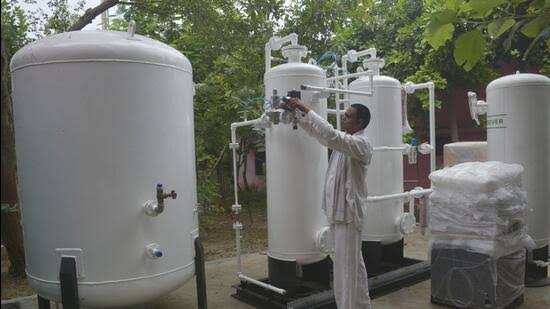Jahangeer Ganaie
Srinagar, Nov 10 :
Oxygen demand in Kashmir rises by approximately 30 percent during winter, posing challenges for poor patients grappling with unscheduled power cuts, according to oxygen plant owners.
While the oxygen facilities have been enhanced in Kashmir after Covid-19; however, patients at home often suffer due to unscheduled power interruptions, they said.
Junaid Ahmad of Breath Zone company informed the news agency—Kashmir News Observer (KNO) that patients relying on home oxygen require a continuous power supply for their oxygen concentrators. Unfortunately, frequent power cuts during Kashmir’s winters add to the suffering of these patients, he said.
While some patients can rely on backups such as inverters or generators to run oxygen concentrators, those from economically weaker families, particularly those in remote areas, face severe difficulties during winter due to unscheduled power cuts, he added.
“Besides concentrators, the invasive ventilators and CPAP machines for those having sleep apnea, affecting around 10 percent of the population, also rely on electricity. The common occurrence of unscheduled power cuts in winter exacerbates the challenges faced by these patients,” Junaid said.
He said due to power fluctuations in winter, these machines often develop issues, requiring oxygen plant teams to be 40-50 percent more active during this season. “We receive an increased number of calls for assistance,” he said, adding, “During power crises, patients turn to various NGOs for cylinders, but the temporary relief provided by these cylinders lasts only a few hours.”
Faisal Ahmad from JK Gases company informed KNO that with the onset of winter, the demand for oxygen, particularly in cylinders, surges. He said concentrators can only provide low-flow oxygen, making cylinders essential in emergencies.
“The frequent unscheduled power cuts since October lead to an uptick in emergency calls, especially during night hours when patients have no alternative but to rely on oxygen,” he said.
“We have to generate more oxygen by around 30 percent in winters as compared to summer due to the demand, but due to electricity crisis, sometimes generation also gets affected,” he added.
Faisal said that one cylinder lasts only four hours; then the patient has to take another cylinder. However, it is possible only for patients in city or town and those living in far-flung areas suffer badly.
Experts said that asthma and heart patients become more reliant on oxygen cylinders or concentrators as during winters, doors and windows are being closed fully to escape cold—(KNO)

